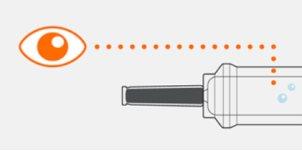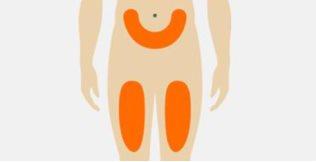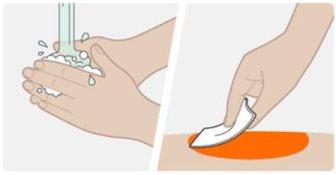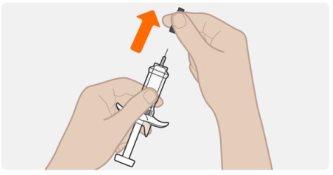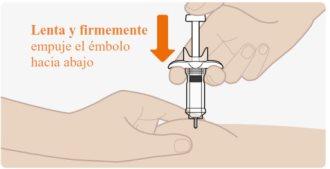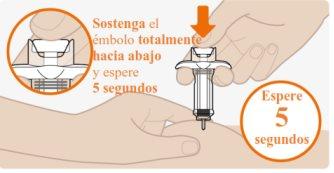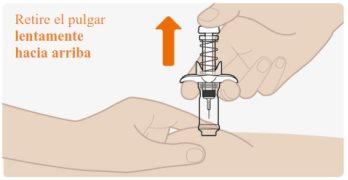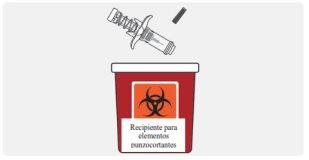
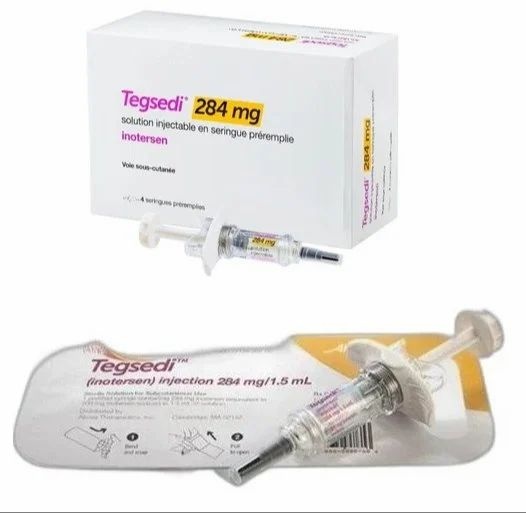
ТЕГСЕДИ 284 мг Раствор для инъекций в предварительно заполненном шприце

Спросите врача о рецепте на ТЕГСЕДИ 284 мг Раствор для инъекций в предварительно заполненном шприце

Инструкция по применению ТЕГСЕДИ 284 мг Раствор для инъекций в предварительно заполненном шприце
Введение
Прошпект: информация для пользователя
Тегседи 284 мг раствор для инъекций в предварительно заполненном шприце
Инотерсен
Это лекарство подлежит дополнительному наблюдению, что ускорит обнаружение новой информации о его безопасности. Вы можете внести свой вклад, сообщая о нежелательных реакциях, которые у вас могут возникнуть. В конце раздела 4 содержится информация о том, как сообщать о этих нежелательных реакциях.
Прочитайте весь прошпект внимательно перед началом использования этого лекарства, поскольку он содержит важную информацию для вас.
- Сохраните этот прошпект, поскольку вам может потребоваться прочитать его снова.
- Если у вас есть какие-либо вопросы, проконсультируйтесь с вашим врачом, фармацевтом или медсестрой.
- Это лекарство было назначено только вам, и вы не должны давать его другим людям, даже если у них такие же симптомы, как у вас, поскольку оно может нанести им вред.
- Если вы испытываете нежелательные реакции, проконсультируйтесь с вашим врачом, фармацевтом или медсестрой, даже если это нежелательные реакции, которые не указаны в этом прошпекте. См. раздел 4.
Содержание прошпекта
- Что такое Тегседи и для чего он используется
- Что вам нужно знать перед началом использования Тегседи
- Как использовать Тегседи
- Возможные нежелательные реакции
- Хранение Тегседи
- Содержание упаковки и дополнительная информация
1. Что такое Тегседи и для чего он используется
Тегседи содержит активное вещество инотерсен. Инотерсен используется для лечения взрослых с семейной амилойдозой, вызванной транстиретином. Семейная амилойдоза, вызванная транстиретином, - это генетическое заболевание, которое приводит к накоплению небольших волокон белка, называемого транстиретином, в органах вашего тела, что препятствует их нормальной работе. Тегседи используется, когда заболевание вызывает симптомы полинейропатии (повреждение нервов).
Активное вещество в Тегседи, инотерсен, - это тип лекарства, называемый ингибитором олигонуклеотида антисмысла. Он действует, снижая производство транстиретина печенью, и таким образом снижает риск отложения волокон транстиретина в органах и возникновения симптомов.
2. Что вам нужно знать перед началом использования Тегседи
Не используйте Тегседи:
- если вы аллергичны к инотерсену или любому другому компоненту этого лекарства (перечисленному в разделе 6).
- если анализы показывают, что у вас слишком низкий уровень тромбоцитов (клеток крови, которые помогают при свертывании).
- если тесты функции почек или белка в моче показывают признаки серьезных проблем с почками.
- если у вас есть тяжелое нарушение функции печени (печеночная недостаточность).
Предостережения и меры предосторожности
Перед началом лечения Тегседи ваш врач оценит клетки крови, функцию печени, функцию почек, витамин А и уровень белка в моче. Также могут провести тесты, чтобы убедиться, что у вас отрицательный результат теста на беременность. Если только ваш врач не рекомендует это явно, вам будет назначен Тегседи только в том случае, если все эти результаты находятся в допустимых пределах, и результат вашего теста на беременность отрицательный. Ваш врач будет регулярно проводить эти тесты во время лечения. Важно, чтобы эти анализы крови и мочи проводились регулярно во время использования Тегседи.
Тромбоцитопения
Тегседи может снижать уровень клеток крови, ответственных за свертывание (тромбоцитов), что может привести к состоянию, называемому тромбоцитопенией, в любое время во время лечения Тегседи (см. раздел 4). Когда у вас недостаточно тромбоцитов, как при тромбоцитопении, ваша кровь может не свертываться достаточно быстро, чтобы остановить кровотечение. Это может привести к образованию гематом, а также к более серьезным проблемам, таким как чрезмерное кровотечение или внутреннее кровотечение. Ваш врач будет проводить анализы крови, чтобы контролировать уровень тромбоцитов до лечения и регулярно во время всего лечения Тегседи. Важно, чтобы эти анализы крови проводились регулярно во время использования Тегседи из-за риска тяжелого кровотечения, вызванного низким уровнем тромбоцитов. Если вы прекратите использовать Тегседи, вам необходимо будет контролировать показатели крови 8 недель после прекращения приема лекарства.
Обратитесь к вашему врачу немедленно, если у вас появляются необъяснимые гематомы или высыпания небольших красных пятен на коже (называемые петехиями), кровотечение из порезов на коже, которое не останавливается или становится гноистым, кровотечение из носа или десен, кровь в моче или кале или кровотечение в белой части глаз. Обратитесь за помощью немедленно, если у вас появляется жесткость в шее или необычная и сильная головная боль, поскольку эти симптомы могут быть вызваны кровотечением в мозге.
Гломерулонефрит/проблемы с почками
Гломерулонефрит - это состояние почек, при котором они не работают правильно из-за воспаления и повреждения почек. Некоторые пациенты, леченные инотерсеном, развили это состояние. Симптомы гломерулонефрита включают пену в моче, мочу розового или коричневого цвета, кровь в моче и снижение количества мочи.
Некоторые пациенты, леченные инотерсеном, также развили ухудшение функции почек без гломерулонефрита.
Ваш врач будет контролировать функцию почек до лечения и регулярно во время лечения Тегседи. Важно, чтобы эти анализы крови проводились регулярно во время использования Тегседи из-за риска тяжелого кровотечения, вызванного низким уровнем тромбоцитов. Если вы прекратите использовать Тегседи, необходимо будет контролировать функцию почек 8 недель после прекращения приема лекарства. Если у вас развивается гломерулонефрит, ваш врач будет лечить это состояние.
Дефицит витамина А
Тегседи может снижать уровень витамина А (также называемого ретинолом) в вашем организме. Ваш врач будет измерять эти уровни, и если они уже низкие, это необходимо будет исправить, и все симптомы будут устранены до начала лечения Тегседи. Симптомы низкого уровня витамина А включают:
- Сухие глаза, плохое зрение, снижение ночного зрения, размытое или мутное зрение
Если у вас出现ятся проблемы со зрением или любые другие проблемы с глазами во время использования Тегседи, сообщите об этом вашему врачу. Возможно, ваш врач направит вас к специалисту по глазам для осмотра, если это необходимо.
Ваш врач порекомендует вам принимать ежедневный добавок витамина А во время лечения Тегседи.
Уровни витамина А, как слишком высокие, так и слишком низкие, могут нанести вред развитию нерожденного ребенка. Следовательно, женщины детородного возраста должны исключить беременность перед началом лечения Тегседи и должны использовать эффективные методы контрацепции (см. раздел "Беременность и лактация" ниже).
Если вы планируете стать беременной, вы прекратите принимать инотерсен, включая добавки витамина А, и убедитесь, что ваши уровни витамина А вернулись к нормальным значениям до попытки зачатия.
Если у вас неожиданная беременность, вы прекратите принимать инотерсен. Однако из-за длительной активности Тегседи возможно, что ваши уровни витамина А останутся сниженными. Неизвестно, может ли продолжение приема добавок витамина А в размере 3000 МЕ в день нанести вред вашему нерожденному ребенку во время первого триместра беременности, но эта доза не должна превышаться. Вы возобновите прием добавок витамина А во время второго и третьего триместров беременности, если ваши уровни витамина А еще не вернулись к норме, из-за более высокого риска дефицита витамина А в третьем триместре.
Повреждение печени и контроль печени
Тегседи может вызывать серьезные проблемы с печенью. Перед началом приема инотерсена вам необходимо будет пройти анализ крови, чтобы убедиться, что ваша печень функционирует правильно. Также вам необходимо будет проходить эти анализы крови регулярно во время приема этого лекарства. Важно, чтобы эти анализы крови проводились регулярно во время использования Тегседи.
Отказ от трансплантации печени
Проконсультируйтесь с вашим врачом перед использованием Тегседи, если вы получили трансплантацию печени. Были зарегистрированы случаи отказа от трансплантации печени у пациентов, леченных Тегседи. Ваш врач будет регулярно наблюдать за этим аспектом во время лечения Тегседи.
Дети и подростки
Тегседи не должен использоваться у детей и подростков младше 18 лет.
Другие лекарства и Тегседи
Сообщите вашему врачу или фармацевту, если вы принимаете, недавно принимали или можете принимать любое другое лекарство. Важно, чтобы вы сообщили вашему врачу, если вы уже проходите лечение любым из следующих лекарств:
- Лекарства, предотвращающие образование тромбов или снижающие количество тромбоцитов в крови, например, ацетилсалициловую кислоту, гепарин, варфарин, клопидогрел, ривароксабан и дабигатран.
- Любое лекарство, которое может изменить функцию почек или нанести вред почкам, например, сульфонамиды (используемые как антибиотики), анилиды (используемые для лечения лихорадки и боли), антагонисты альдостерона (используемые как диуретики) и природные алкалоиды опия и другие опиоиды (используемые для лечения боли).
Беременность и лактация
Если вы беременны или кормите грудью, считаете, что можете быть беременной или планируете стать беременной, проконсультируйтесь с вашим врачом перед использованием этого лекарства.
Женщины детородного возраста
Тегседи снижает уровень витамина А в вашем организме, который важен для нормального развития плода во время беременности. Неизвестно, может ли добавка витамина А компенсировать риск дефицита витамина А, который может повлиять на вашего нерожденного ребенка (см. "Предостережения и меры предосторожности" в предыдущих абзацах). Если вы являетесь женщиной детородного возраста, вы должны использовать эффективные методы контрацепции и исключить беременность перед началом лечения Тегседи.
Беременность
Вы не должны использовать Тегседи, если вы беременны, unless ваш врач явно рекомендует это.
Лактация
Инотерсен может проникать в грудное молоко. Не можно исключить риск для грудного ребенка. Проконсультируйтесь с вашим врачом, если вам необходимо прекратить лактацию или прекратить лечение Тегседи.
Вождение и использование машин
Использование Тегседи не показало влияния на способность управлять транспортными средствами или работать с машинами.
Тегседи содержит натрий
Это лекарство содержит менее 1 ммоль натрия (23 мг) на 1,5 мл, поэтому оно практически "не содержит натрия".
3. Как использовать Тегседи
Следуйте точно инструкциям по введению этого препарата, указанным вашим врачом. В случае сомнений проконсультируйтесь снова с вашим врачом или фармацевтом.
Рекомендуемая доза Тегседи составляет 284 мг инотерсена.
Дозы следует вводить один раз в неделю. Все последующие дозы следует вводить один раз в неделю, в один и тот же день каждой недели.
Способ и форма введения
Тегседи предназначен только для подкожного введения (в/м).
Инструкции по применению
Прежде чем использовать предзагруженную шприц-инъектор, ваш врач покажет вам или вашему опекуну, как правильно им пользоваться. Если у вас или вашего опекуна есть какие-либо сомнения, спросите у вашего врача.
Прочитайте инструкции по применению перед началом использования предзагруженного шприца-инъектора и каждый раз, когда вам повторно назначают препарат, поскольку может быть новая информация.
Руководство по частям
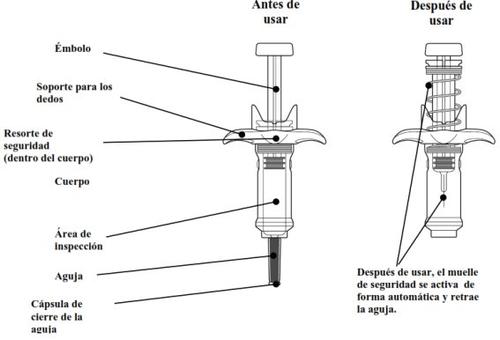
Каждый предзагруженный шприц-инъектор содержит одну дозу и предназначен для одноразового использования.
ПРЕДУПРЕЖДЕНИЯ | |
Неснимайте колпачок с иглы до тех пор, пока не достигнете Шага 6этих инструкций и не будете готовы ввести Тегседи. Неделитесь шприц-инъектором с другим человеком и не используйте шприц-инъектор повторно. Неиспользуйте предзагруженный шприц-инъектор, если он упал на твердую поверхность или если он поврежден. Незамораживайте предзагруженный шприц-инъектор. Если发生 любое из вышеперечисленного, утилизируйте предзагруженный шприц-инъектор в контейнер для острых предметов и используйте новый предзагруженный шприц-инъектор. | |
ПОДГОТОВКА | |
| |
Невводите препарат, пока не соберете все необходимые принадлежности. | |
| |
Не перемещайте поршень. | |
| |
| Посмотрите на зону осмотра, чтобы проверить, что раствор прозрачный и бесцветный или имеет светло-желтый оттенок. Нормально видеть пузырьки в растворе. Не нужно ничего делать с этим. Неиспользуйте, если раствор выглядит мутным, имеет неправильный цвет или содержит частицы. Если раствор выглядит мутным, имеет неправильный цвет или содержит частицы, утилизируйте предзагруженный шприц-инъектор в контейнер для острых предметов и используйте новый предзагруженный шприц-инъектор. |
| |
| Выберите место введения на животе (брюшной полости) или передней части бедра. Место введения также может быть внешней областью верхней части руки, если Тегседи вводится опекуном. Невводите в область 3 см вокруг пупка. Невводите в одно и то же место каждый раз. Невводите, если кожа синяя, болезненная, красная или твердая. Невводите в татуировки, шрамы или поврежденную кожу. Невводите через одежду. |
| |
| Мойте руки с водой и мылом. Очистите место введения салфеткой, пропитанной спиртом, с круговым движением. Дайте коже высохнуть на воздухе. Не трогайте область снова перед введением. |
ВВЕДЕНИЕ | |
| |
| Держите предзагруженный шприц-инъектор за корпус, с иглой, указывающей наружу. Удалите колпачок с иглы, потянув его в прямом направлении. Не поворачивайте его. Вы можете увидеть каплю жидкости на конце иглы. Это нормально. Держите руки подальше от поршня, чтобы избежать его преждевременного нажатия. Неудаляйте колпачок с иглы до тех пор, пока не будете готовы ввести Тегседи. Нетяните колпачок, держа предзагруженный шприц-инъектор за поршень. Всегда держите корпус шприца. Недопускайте, чтобы игла касалась любой поверхности. Неудаляйте пузырьки из предзагруженного шприца-инъектора. Невозвращайте колпачок на иглу в предзагруженный шприц-инъектор. |
| |
Держите предзагруженный шприц-инъектор в одной руке. Держите кожу вокруг места введения так, как показал вам ваш медицинский работник. Вам необходимо слегка сжать кожу в месте введения или ввести препарат без сжатия кожи. Медленно вставьте иглу в выбранное место введения под углом 90° до тех пор, пока она не будет полностью введена. Недержите предзагруженный шприц-инъектор за поршень или не нажимайте на поршень, чтобы вставить иглу. | |
| |
| Медленно и твердо нажмите поршень вниз до конца, пока препарат не будет введен. Проверьте, что игла полностью введена в место введения во время введения препарата. Важно нажать поршень полностью вниз. Предзагруженный шприц-инъектор может издать «щелчок» при нажатии поршня вниз. Это нормально. Неозначает, что введение завершено. Поршень может показаться жестким в конце введения. Вам может потребоваться нажать на поршень немного сильнее, чтобы убедиться, что вы нажали его как можно дальше. Неотпускайте поршень. |
| |
| Твердо нажмите на поршень в конце введения. Держите поршень полностью вниз и подождите 5 секунд. Если вы отпустите поршень слишком быстро, вы можете потерять часть препарата. Поршень начнет автоматически подниматься, что означает, что поршень был полностью нажат вниз. Повторно нажмите, если поршень не начинает автоматически подниматься. |
| |
| Медленно отпустите поршень и дайте пружине безопасности автоматически удалить поршень вверх. Теперь игла должна быть безопасно удалена внутри предзагруженного шприца-инъектора, и пружина механизма безопасности будет видна снаружи поршня. Когда поршень останавливается, введение завершено. Если поршень не поднимается автоматически при ослаблении давления, это означает, что пружина безопасности не была активирована, и вам необходимо повторно нажать поршень, но с большей силой. Неподнимайте поршень вручную. Поднимайте весь предзагруженный шприц-инъектор в прямом направлении вверх. Непытайтесь снова надеть колпачок на удаленную иглу. Нетрите место введения. |
УТИЛИЗАЦИЯ И УХОД | |
Утилизация использованного шприца-инъектора | |
| После использования немедленно поместите использованный предзагруженный шприц-инъектор в контейнер для острых предметов. Не выбрасывайте предзагруженный шприц-инъектор в домашний мусор. |
Если вы приняли больше Тегседи, чем следует
Свяжитесь с вашим врачом или фармацевтом, или немедленно обратитесь в больницу, даже если у вас нет никаких симптомов.
Если вы пропустили прием Тегседи
Если вы пропустили дозу Тегседи, примите следующую дозу как можно скорее, если только следующая запланированная доза не должна быть принята в течение двух дней после пропущенной дозы, в этом случае следует пропустить пропущенную дозу и принять следующую дозу по плану.
Непринимайте двойную дозу, чтобы компенсировать пропущенные дозы.
Если вы прекратите лечение Тегседи
Не прекращайте лечение Тегседи, если только ваш врач не скажет вам, что необходимо сделать это.
Если у вас есть какие-либо другие вопросы о использовании этого препарата, спросите у вашего врача, фармацевта или медсестры.
4. Возможные побочные эффекты
Как и все лекарства, это лекарство может вызывать побочные эффекты, хотя не все люди испытывают их.
Серьезные побочные эффекты
Если вы испытываете любой из следующих побочных эффектов, прекратите использование Тегседи и немедленно свяжитесь с вашим врачом:
- Симптомы, которые могут указывать на гломерулонефрит (когда ваши почки не работают правильно), такие как пена в моче, моча розового или коричневого цвета, кровь в моче или мочеиспускание реже, чем обычно. Гломерулонефрит является частым побочным эффектом инотерсена (может поражать до 1 из 10 человек).
- Симптомы, которые могут указывать на тромбоцитопению (кровь не сворачивается из-за низкого уровня тромбоцитов в крови), такие как необъяснимые синяки или высыпание небольших красных пятен на коже (называемых петехиями), кровотечение из порезов на коже, которое не останавливается или гноится, кровотечение из носа или десен, кровь в моче или кале или кровоизлияние в белую часть глаз. Низкий уровень тромбоцитов в крови является очень частым побочным эффектом инотерсена (может поражать до 1 из 10 человек).
- Симптомы, которые могут указывать на повреждение печени, такие как желтуха глаз или кожи, темная моча, возможно, сопровождаемая зудом кожи, болью в верхней правой части живота (абдомена), потерей аппетита, кровотечением или появлением синяков чаще, чем обычно, или чувством усталости.
Немедленно обратитесь за помощью, если у вас есть жесткость в шее или необычная и сильная головная боль, поскольку эти симптомы могут быть вызваны кровоизлиянием в мозг.
Другие побочные эффекты
Очень частые(могут поражать более 1 из 10 человек)
- Уменьшение количества красных кровяных телец, которое может вызвать бледность кожи и привести к слабости или затруднению дыхания (анемия)
- Головная боль
- Рвота или тошнота (желание рвоты) - Повышение температуры тела
- Чувство холода или озноб
- Боль в месте введения, покраснение, зуд или синяки
- Отек в лодыжках, ногах или пальцах рук (периферический отек)
Частые(могут поражать до 1 из 10 человек)
- Увеличение количества белых кровяных телец, называемых эозинофилами (эозинофилия)
- Уменьшение аппетита
- Чувство головокружения или обморока, особенно при стоянии (низкое кровяное давление, гипотония)
- Синяк
- Накопление крови в тканях, которое можно увидеть как значительный синяк (гематомы)
- Зуд
- Высыпание
- Повреждение почек, которое может привести к нарушению функции почек или почечной недостаточности
- Изменения в результатах анализов крови и мочи (это может указывать на повреждение печени или почек)
- Симптомы, похожие на грипп, такие как высокая температура, боли и озноб
- Отек или изменение цвета кожи в месте введения
Редкие(могут поражать до 1 из 100 человек)
- Аллергическая реакция
Сообщение о побочных эффектах
Если вы испытываете любой побочный эффект, проконсультируйтесь с вашим врачом или фармацевтом, даже если это побочные эффекты, которые не перечислены в этом листке-вкладыше. Вы также можете сообщить о них напрямую через национальную систему уведомления, включенную в Приложение V. Сообщая о побочных эффектах, вы можете помочь предоставить больше информации о безопасности этого лекарства.
5. Хранение Тегседи
Храните это лекарство вне поля зрения и досягаемости детей.
Не используйте это лекарство после срока годности, указанного на коробке, лотке и предзагруженном шприце-инъекторе после «CAD/EXP». Срок годности - последний день месяца, указанного.
Храните в холодильнике (при температуре от 2°C до 8°C).
Не замораживайте.
Тегседи можно хранить без холодильника до 6 недель при температуре ниже 30°C. Если он не хранится в холодильнике и не используется в течение 6 недель, препарат должен быть утилизирован.
Храните в оригинальной упаковке, чтобы защитить от света.
Не используйте это лекарство, если вы заметили, что содержимое мутное или содержит частицы.
Лекарства не должны выбрасываться в канализацию или мусор. Спросите у вашего фармацевта, как утилизировать упаковку и лекарства, которые вам больше не нужны. Таким образом, вы поможете защитить окружающую среду.
6. Состав и дополнительная информация
Состав Тегседи
- Активное вещество - инотерсен.
Каждый мл содержит 189 мг инотерсена (в виде инотерсена натрия). Каждый предзагруженный шприц-инъектор содержит 284 мг инотерсена (в виде инотерсена натрия) в 1,5 мл раствора.
- Другие компоненты - вода для инъекций, гидроксид натрия и соляная кислота (см. «Тегседи содержит натрий» в разделе 2).
Внешний вид и упаковка
Тегседи - прозрачный, бесцветный или светло-желтый инъекционный раствор (pH 7,5 - 8,8) в предзагруженном шприце-инъекторе.
Тегседи выпускается в упаковках по 1 или 4 предзагруженным шприц-инъекторам.
Возможно, не все размеры упаковок будут продаваться.
Владелец разрешения на маркетинг
Akcea Therapeutics Ireland Ltd
St. James House,
72 Adelaide Road, Dublin 2
D02 Y017, Ирландия
Производитель
ABF Pharmaceutical Services GmbH
Brunnerstraße 63/18-191230 Вена
Австрия
Дата последнего обзора этого листка-вкладыша: 11/2023
Подробная информация о этом лекарстве доступна на сайте Европейского агентства по лекарственным средствам: http://www.ema.europa.eu.
- Страна регистрации
- Активное вещество
- Требуется рецептДа
- Производитель
- Информация носит справочный характер и не является медицинской рекомендацией. Перед приемом любых препаратов проконсультируйтесь с врачом. Oladoctor не несет ответственности за медицинские решения, принятые на основе этого контента.
- Аналоги ТЕГСЕДИ 284 мг Раствор для инъекций в предварительно заполненном шприцеФорма выпуска: ИНЪЕКЦИОННЫЙ РАСТВОР, 25 мгАктивное вещество: ВутрисиранПроизводитель: Alnylam Netherlands B.V.Требуется рецептФорма выпуска: ОРАЛЬНЫЙ РАСТВОР/СУСПЕНЗИЯ, 300 мг/млАктивное вещество: Оксибат натрияПроизводитель: Accord Healthcare S.L.U.Требуется рецептФорма выпуска: ТАБЛЕТКА, РАСПАДАЮЩАЯСЯ ВО РТУ / ЛИОТАБ, 50 мгАктивное вещество: РилузолПроизводитель: Zambon S.P.A.Требуется рецепт
Аналоги ТЕГСЕДИ 284 мг Раствор для инъекций в предварительно заполненном шприце в других странах
Лучшие аналоги с тем же действующим веществом и терапевтическим эффектом.
Аналог ТЕГСЕДИ 284 мг Раствор для инъекций в предварительно заполненном шприце в Україна
Врачи онлайн по ТЕГСЕДИ 284 мг Раствор для инъекций в предварительно заполненном шприце
Консультация по дозировке, побочным эффектам, взаимодействиям, противопоказаниям и продлению рецепта на ТЕГСЕДИ 284 мг Раствор для инъекций в предварительно заполненном шприце – по решению врача и с учетом местных правил.




